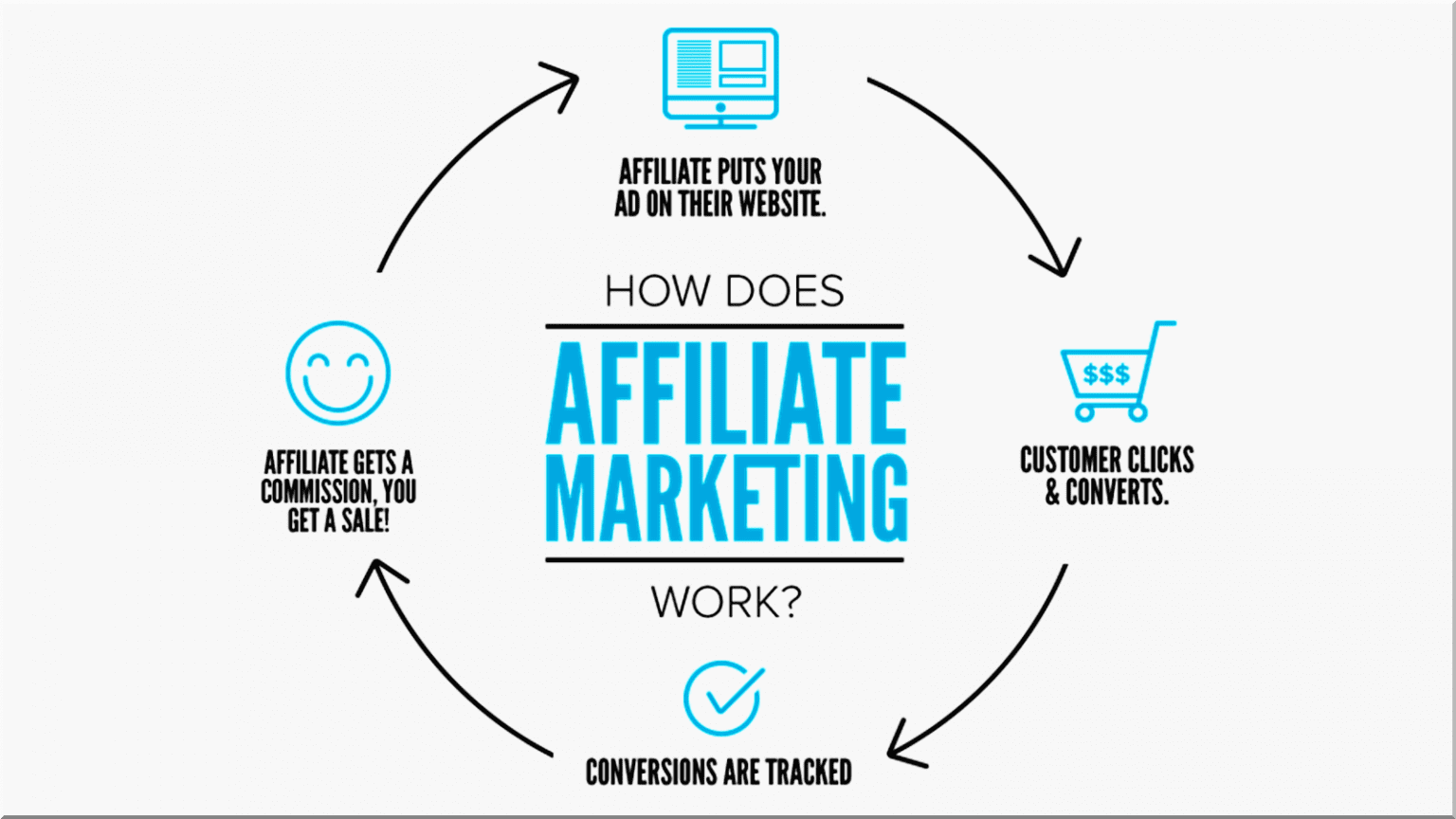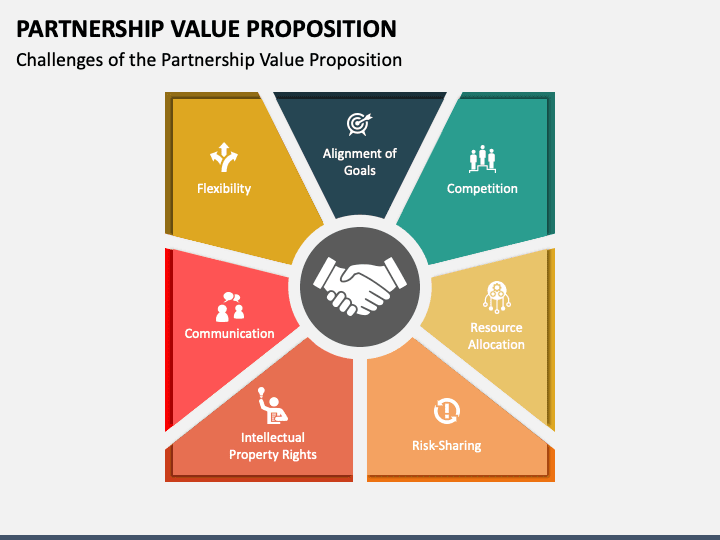Dans le monde des affaires, la collaboration est essentielle. C'est la clé pour débloquer de nouvelles opportunités et faire exploser votre croissance. La vente en partenariat, en particulier, est un excellent exemple de collaboration qui porte ses fruits. Il est indispensable d'ajouter la vente en partenariat à votre arsenal d'outils de vente. Voici pourquoi...
Qu'est-ce que la vente en partenariat ou la vente par correspondance ?
La vente en partenariat consiste à faire en sorte que votre entreprise et une autre entreprise deviennent stratégiquement des alliés dans les affaires. Vous fixez ensemble des objectifs et élargissez vos horizons en partageant des ressources et des bases de données. L'objectif est d'établir une relation à long terme et de créer une valeur réelle et des revenus pour les deux entreprises concernées.
Les plus grandes entreprises du monde tirent le meilleur parti de la vente en partenariat. 95% des revenus de Microsoft par l'intermédiaire de ses partenaires.
La vente par canal, en revanche, est une stratégie qui consiste à vendre des produits par l'intermédiaire d'une autre entreprise, généralement un partenaire tiers tel qu'un grossiste ou un distributeur. 67 % des acheteurs en ligne ont effectué des achats en recourant à plusieurs canaux, ce qui montre l'intérêt évident de la vente par canal.
En résumé, la vente en partenariat consiste à établir des relations de collaboration approfondies avec des entreprises spécifiques, tandis que la vente par canal consiste à utiliser des canaux tiers pour atteindre des clients sur différents marchés.
Qu'est-ce que le marketing d'affiliation ?
Le marketing d'affiliation est un type de vente en partenariat, mais il est suffisamment différent pour mériter sa propre description. Il s'agit d'un modèle publicitaire dans lequel une entreprise paie des tiers pour qu'ils génèrent du trafic et des leads vers un produit ou un service. Presque tout le monde peut s'inscrire à des programmes d'affiliation pour des marques qu'il connaît et aime. Il y a généralement des conditions préalables, mais ce n'est pas comme la vente en partenariat où deux entreprises spécifiques s'associent avec des objectifs communs.
Les affiliés sont rémunérés sous forme de commissions pour aider les entreprises à trouver de nouveaux clients et à faire de la promotion. Il n'y a pas de limite au nombre d'affiliés que vous pouvez utiliser. Il s'agit d'une activité différente du marketing de partenariat, qui s'effectue généralement entre deux parties qui travaillent en tandem pour atteindre les mêmes objectifs.
Toutefois, ce n'est pas parce que le marketing d'affiliation n'est pas, à proprement parler, une vente en partenariat, qu'il ne peut pas être utilisé en complément. Le marketing d'affiliation peut être un excellent moyen d'obtenir la participation d'ambassadeurs de la marque et de faire connaître votre produit ou service à des marchés inexploités.
Consultez l'infographie ci-dessous pour un aperçu rapide et facile du fonctionnement du marketing d'affiliation.

Les avantages de la vente en partenariat
La vente en partenariat peut vous offrir de nombreux avantages. Vous pouvez étendre votre champ d'action, accéder à de nouveaux marchés et renforcer votre crédibilité sur le marché en collaborant avec une entreprise de renom.
Examinons quelques-uns des avantages de la vente en partenariat...
Élargissez votre champ d'action
Les partenariats avec d'autres entreprises vous permettent d'atteindre de nouveaux clients sans coûts de marketing supplémentaires. Vous pouvez exploiter les bases de données clients des uns et des autres et accroître la visibilité de votre marque lorsque vous vous associez à d'autres entreprises.
Combiner les expertises
En vous associant à des partenaires qui possèdent des compétences et une expertise complémentaires, vous pouvez combler vos lacunes. La mise en place d'un partenariat diversifié et à multiples facettes peut vous permettre de capitaliser sur différentes forces, accélérant ainsi la croissance et le succès de votre entreprise.
Économiser de l'argent
Lorsque vous vous associez à un partenaire, vous pouvez partager les dépenses, ce qui vous permet d'économiser de l'argent à tous les deux. Les partenaires peuvent également vous aider à collecter des fonds en cas de besoin.
Partager les risques
Il est important de partager le fardeau lorsque l'on s'associe. Il est bon de savoir que vous et votre partenaire vous soutiendrez mutuellement si les choses ne se passent pas comme prévu. Il est important d'avoir la même vision commune, de communiquer honnêtement et d'accorder l'accès aux ressources pour partager les risques et les charges financières de vos stratégies communes.
Croissance future
S'associer et former une coalition solide peut stimuler votre croissance à long terme. Un partenariat à long terme peut conduire à des succès futurs et vous pouvez ouvrir la voie à une croissance durable en travaillant ensemble et en capitalisant sur les nouvelles opportunités qui se présentent sur le marché. En outre, vous pouvez également travailler avec des consultants en entrepôt de données, car ils peuvent optimiser votre stratégie en matière de données, garantissant ainsi une croissance efficace et évolutive.
Créer une équipe de vente en partenariat
Les ventes en partenariat sont plus nombreuses que jamais, surtout après la pandémie et la récession quasi permanente. Les entreprises doivent commencer à réduire leurs dépenses et à mieux gérer leur budget. C'est pourquoi les partenaires sont les bienvenus.
Il est essentiel d'avoir une mentalité de partenaire d'abord pour évaluer si c'est la bonne stratégie pour vous. Prenons l'exemple de Powell Software, qui a consacré du temps au développement de son réseau de partenaires et dont le chiffre d'affaires est aujourd'hui de 100 % provenant de partenaires.
Si cela fonctionne pour eux, pourquoi cela ne fonctionnerait-il pas pour vous ?
Examinons quelques-uns des points les plus spécifiques pour façonner votre partenariat...
Choisir le bon partenaire
Pour choisir le bon partenaire pour votre entreprise, vous devez rechercher des sociétés qui partagent des valeurs similaires et un marché cible similaire à celui que vous occupez.
Trouvez une entreprise qui complète vos points forts, qui jouit d'une bonne réputation et dont le style de communication correspond au vôtre. La confiance est un facteur clé si vous souhaitez une transition en douceur et une durabilité à long terme. L'établissement d'un partenariat avec le bon allié peut déboucher sur de nouvelles opportunités et vous apporter à tous deux un succès mutuel à long terme.
Alignez vos objectifs
Veillez à ce que vos partenaires et vous-même ayez les mêmes objectifs. Vous devriez rechercher des partenaires qui ont des valeurs et des visions similaires aux vôtres et qui s'engagent de la même manière que vous à satisfaire les clients. Lorsque vous travaillez tous deux à la réalisation des mêmes objectifs, votre partenariat se renforce, ce qui accroît vos chances de réussite à long terme.
Rechercher la confiance et une communication claire
En favorisant la confiance et une communication ouverte dès le départ, vous pouvez jeter les bases d'une relation durable. Parlez régulièrement, partagez vos idées et aidez-vous mutuellement à résoudre les problèmes de manière efficace.
Si vous suivez les principes de base de la confiance et d'une bonne communication, il n'y a aucune raison pour que le partenariat ne soit pas très rentable pour vous deux.
Formation des partenaires
Il faut du temps et de la formation pour perfectionner la vente en partenariat. L'objectif est de créer un partenariat fructueux tout en intégrant l'ensemble de vos processus de vente de manière transparente. La formation à la vente est essentielle, quel que soit le type de partenariat, mais la collaboration avec d'autres entreprises nécessite un type de formation spécifique.
Vos équipes, le cas échéant, ont besoin d'une formation adéquate pour se familiariser avec les différents flux de travail de l'entreprise. Mais vous devez également vous former et être formé ! Si vous ne parvenez pas à maîtriser les principes fondamentaux de l'entreprise de votre partenaire et à consacrer du temps à la formation de ce dernier, vous risquez d'abandonner avant même d'avoir commencé.
Évaluer et améliorer régulièrement
Examinez régulièrement votre partenariat et ses performances afin d'en identifier les forces et les faiblesses. Si vous restez immobile trop longtemps, votre partenariat s'essoufflera. Ne vous laissez pas faire !
L'évaluation des performances des partenaires est cruciale pour la réussite. Elle vous aidera à évaluer le potentiel et la valeur de vos partenaires et à identifier les domaines sur lesquels vous devez travailler ensemble. C'est un excellent moyen de fournir un retour d'information ouvert et d'encourager les deux parties à s'améliorer.
Les défis de la vente en partenariat
Maintenant que vous savez comment construire un partenariat fructueux et durable, rappelons que ce n'est pas toujours le soleil et l'arc-en-ciel. Selon Mark Sochan, dans "The Art of Strategic Partnering" (L'art du partenariat stratégique) 60-65% des partenariats stratégiques échouent.
Et il y a de nombreuses raisons à cela.

Vous devez toujours vous demander si le partenaire que vous avez choisi a les mêmes objectifs et les mêmes valeurs que vous, sinon vous risquez de vous retrouver dans une situation compliquée.
Il y a des défis à relever pour que la collaboration fonctionne et profite à tous les deux. Examinons-les de plus près.
Visions partagées
73 % des spécialistes du marketing considèrent la gestion des partenaires comme un défi majeur, et il est facile de comprendre pourquoi. Si vous avez des publics cibles différents, des idées d'expansion différentes ou si vous ne pouvez pas établir les mêmes priorités, il peut être difficile de collaborer efficacement. Sans une vision commune, vous n'aurez aucun espoir de réussir votre partenariat commercial.
Définissez clairement vos objectifs dès le départ afin de vous assurer que vous envisagez tous deux le même avenir.
Gestion et allocation des ressources
Gérer et allouer des ressources telles que le capital, le personnel et le temps n'est pas la tâche la plus facile. Vous devez veiller à ce que chaque partenaire reçoive et contribue à sa juste part pour atteindre les objectifs communs.
Planifiez, budgétez et suivez les ressources simultanément et éliminez les conflits mineurs avant qu'ils ne fassent échouer votre partenariat. Établissez une répartition transparente des ressources dès le début de votre partenariat, en définissant clairement les principales responsabilités en matière de gestion des ressources. Veillez à ce que les canaux de communication restent ouverts et à ce que les deux parties aient accès à une source centrale de vérité sur laquelle s'appuyer pour vérifier les choses en cas de désaccord.
En suivant ces étapes, vous pouvez forger une alliance solide pour réussir.
Instaurer la confiance
L'un des plus grands défis de la vente en partenariat est d'instaurer et de maintenir une confiance à long terme dans votre relation. Si la confiance n'est pas au rendez-vous, c'est comme si la relation était morte avant même d'avoir commencé.
Il s'agit d'un élément essentiel pour permettre le travail d'équipe, une communication claire et un parcours sans heurts vers le succès. La confiance et les relations ne sont pas automatiques, elles se construisent au fil du temps et s'entretiennent avec patience. Pour établir les meilleures bases de la confiance, il faut respecter, apprécier et écouter son partenaire. Une fois que vous aurez réussi à instaurer la confiance, vous pourrez fêter au champagne votre premier succès.
Responsabilité et transparence
Pour prendre un bon départ, il est essentiel de se responsabiliser et de faire preuve de transparence dès le début de votre relation. Respectez vos engagements, rendez compte honnêtement de vos performances et partagez ouvertement toutes les informations avec vos partenaires. Les deux parties devront faire de même, sinon cela ne fonctionnera pas.
Des modes de fonctionnement opposés
Vous et votre partenaire pouvez avoir des styles et des façons de gérer les opérations différents. Qu'il s'agisse de la structure de l'organisation, du style de communication ou de l'éthique générale du travail, il est judicieux d'aligner ces éléments et de se mettre sur la même longueur d'onde que votre partenaire avant même d'accepter de travailler ensemble.
Ces différences peuvent provoquer des frictions, il faut donc s'y attaquer de front et respecter les manières de faire de l'autre, tout en trouvant un terrain d'entente si nécessaire.
Absence de priorité
Will Taylor, expert en vente de partenariat, explique que le plus grand défi qu'il entend est que les gens ont du mal à savoir ce qu'il faut prioriser. La mise en place d'un nouveau partenariat peut s'avérer trépidante. Cela peut prendre beaucoup de temps et d'énergie et les résultats peuvent ne pas être immédiatement visibles.
Taylor donne des conseils avisés aux personnes qui se demandent quelles sont leurs priorités.
"Ce dont vous avez besoin, c'est de vous concentrer sur quelque chose, comme un groupe spécifique de partenaires ou un écosystème spécifique. Utiliser son temps efficacement et savoir à quoi prêter attention est la meilleure chose que l'on puisse faire, tant pour soi que pour ses partenaires. Si vous parvenez à attirer l'attention (et, par extension, la confiance) de vos partenaires, vous pourrez créer des relations stratégiques profondes avec eux. Alors, au lieu d'essayer de tout faire, choisissez un partenariat ou une poignée de partenariats sur lesquels travailler et commencez à faire bouger les choses.
Will Taylor, responsable des partenariats NearBound chez Reveal Tweet
En résumé, n'essayez pas de conclure immédiatement deux cents partenariats. Choisissez celui qui vous convient le mieux et consacrez votre énergie à un seul à la fois.
La vente en partenariat est-elle adaptée à votre modèle d'entreprise ?
Il n'est pas difficile de déterminer si la vente en partenariat convient à votre entreprise, mais il faut tenir compte de nombreux aspects différents.
Tout d'abord, vous devez déterminer si le produit ou le service que vous proposez complète le modèle d'entreprise et le public cible de votre partenaire, et vice versa. Si vous n'êtes pas sur la même longueur d'onde en ce qui concerne des éléments fondamentaux tels que le marché cible, vous n'irez pas très loin en tant que partenaires.
Vous devez également disposer des ressources, telles que le personnel, le temps, l'argent et les outils nécessaires au bon fonctionnement du partenariat. Demandez-vous également si les valeurs de votre entreprise correspondent à celles des différents partenaires en question. Avez-vous les mêmes objectifs et les mêmes stratégies de vente globales pour faire de ce partenariat une réussite à long terme ? Si vos valeurs diffèrent, est-ce une raison pour rompre l'accord ? Vous seul pouvez en décider.
Enfin, demandez-vous si vous êtes prêt à partager les responsabilités et les risques liés à un partenariat commercial. C'est l'un des points les plus importants, car l'argent sera partagé et vous devez être prêt, en tant qu'entreprise, à relever le défi.
Étude de cas
Reebok a subi de plein fouet les effets de la pandémie en enregistrant une baisse considérable de ses commandes. Pour y remédier, la société s'est adressée à Acceleration Partners, une agence de marketing de partenariat de premier plan.
Leurs objectifs étaient les suivants
- Gagnez de nouveaux revenus grâce à des campagnes ciblées avec un affilié de fidélisation.
- Augmenter la valeur moyenne des commandes passées par les nouveaux clients.
- Engagez-vous auprès de vos anciens clients pour améliorer leur parcours et les fidéliser à la marque.
Acceleration Partners a lancé une campagne stratégique de quinze jours avec l'un des principaux affiliés de fidélisation, Cartera. Par l'intermédiaire de Cartera, Reebok s'est associé à une grande compagnie aérienne américaine et a offert des points bonus pour des miles aériens pour chaque tranche de 100 dollars dépensés pour des produits Reebok éligibles. La campagne a été promue sur les deux pages d'accueil et sur les bulletins d'information, annonçant les primes à tous les clients des deux sociétés.
La stratégie comprenait un placement média de qualité, un ciblage précis de l'audience et le choix du meilleur affilié de fidélisation. Bien que la campagne n'ait ciblé qu'une seule compagnie aérienne, les résultats ont été extraordinaires :
- Augmentation de 38 % des recettes provenant d'autres programmes sur Cartera
- Reebok a vu son chiffre d'affaires augmenter de 161 % grâce à Cartera
- Augmentation de 329 % du nombre de clics à partir de Cartera
- 143 % d'augmentation des recettes provenant des nouveaux clients de Cartera
- Augmentation de 49 % de la valeur moyenne des commandes de Cartera.
Ce partenariat fructueux a permis à Reebok, autrefois en difficulté, de dépasser le volume de commandes et le chiffre d'affaires qu'il réalisait avant la pandémie ! Ne sous-estimez pas le pouvoir de la vente en partenariat.
Pour en savoir plus sur ce partenariat puissant, consultez le site P2P Marketing.
Commencez votre partenariat commercial de la bonne manière
La vente en partenariat est une approche collaborative qui vous permet d'unir vos forces à celles d'une autre entreprise pour réussir ensemble dans le domaine des ventes. Vous pouvez élargir votre champ d'action, accéder à de nouveaux segments de clientèle et stimuler la croissance de votre chiffre d'affaires plus efficacement que vous ne pourriez le faire seul. Le succès de la vente en partenariat dépend d'une éthique de travail commune, d'une planification minutieuse, d'une communication efficace et de l'alignement des objectifs et des buts que vous poursuivez tous les deux.
Bien que similaires, les ventes en partenariat diffèrent des ventes par canal en ce sens qu'elles offrent un partenariat de collaboration où les deux entreprises sont sur un pied d'égalité. La vente par canal s'apparente davantage à une relation parent/enfant, tandis que le marketing d'affiliation fonctionne davantage comme un programme d'ambassadeurs de marque. Les deux peuvent être bénéfiques, maislorsqu'elle est parfaitement exécutée, la vente en partenariat améliore tous les aspects de la réussite de votre équipe de vente.














